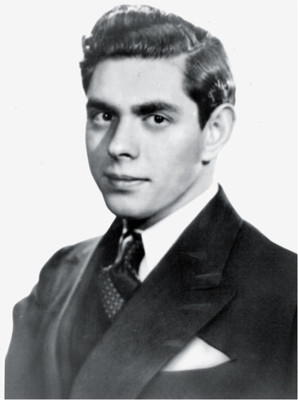
Joseph Shuster, was a Canadian American comic book artist best known for co-creating the DC Comics character Superman, with Jerry Siegel, in Action Comics #1.

McLaughlin Motor Car Company Limited was a Canadian manufacturer of automobiles headquartered in Oshawa, Ontario. Founded by Robert McLaughlin, it once was the largest carriage manufacturing factory in the British Empire.
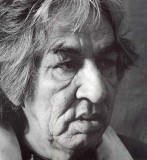
Norval Morrisseau, also known as Copper Thunderbird, was an Indigenous Canadian artist from the Bingwi Neyaashi Anishinaabek First Nation. He is widely regarded as the grandfather of contemporary Indigenous art in Canada. Known as the "Picasso of the North," Morrisseau created works depicting the legends of his people, the cultural and political tensions between native Canadian and European traditions, his existential struggles, and his deep spirituality and mysticism. His style is characterized by thick black outlines and bright colors. He founded the Woodlands School of Canadian art and was a prominent member of the “Indian Group of Seven."

Queen Street is a major east–west thoroughfare in Toronto, Ontario, Canada. It extends from Roncesvalles Avenue and King Street in the west to Victoria Park Avenue in the east. Queen Street was the cartographic baseline for the original east–west avenues of Toronto's and York County's grid pattern of major roads. The western section of Queen is a centre for Canadian broadcasting, music, fashion, performance, and the visual arts. Over the past twenty-five years, Queen West has become an international arts centre and a tourist attraction in Toronto.

Tijuana bibles were palm-sized erotic comics produced in the United States from the 1920s to the early 1960s. Their popularity peaked during the Great Depression era.

The Art Gallery of Ontario is an art museum in Toronto, Ontario, Canada, located in the Grange Park neighbourhood of downtown Toronto, on Dundas Street West. The building complex takes up 45,000 square metres (480,000 sq ft) of physical space, making it one of the largest art museums in North America and the second-largest art museum in Toronto, after the Royal Ontario Museum. In addition to exhibition spaces, the museum also houses an artist-in-residence office and studio, dining facilities, event spaces, gift shop, library and archives, theatre and lecture hall, research centre, and a workshop.
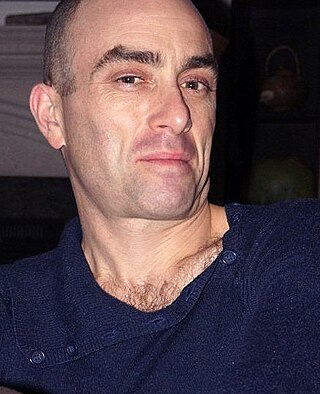
Eli Langer is a Canadian visual artist. Langer rose to prominence in 1993, while 26 years old, in the Toronto art world with a solo exhibition at the Mercer Union Gallery in Toronto. The exhibition consisted of 8 paintings and 50 drawings addressing various issues of childhood sexuality. Toronto police raided the exhibition under Canada's new child pornography legislation and seized 5 paintings and 35 drawings. This event and ensuing media coverage created a national debate over the reach of law and freedom of expression.

R v Butler, [1992] 1 S.C.R. 452 is a leading Supreme Court of Canada decision on pornography and state censorship. In this case, the Court had to balance the right to freedom of expression under section 2 of the Canadian Charter of Rights and Freedoms with women's rights. The outcome has been described as a victory for anti-pornography feminism and the Women's Legal Education and Action Fund, but a loss for alternative sexualities.
In Canada, appeals by the judiciary to community standards and the public interest are the ultimate determinants of which forms of expression may legally be published, broadcast, or otherwise publicly disseminated. Other public organisations with the authority to censor include some tribunals and courts under provincial human rights laws, and the Canadian Radio-television and Telecommunications Commission, along with self-policing associations of private corporations such as the Canadian Association of Broadcasters and the Canadian Broadcast Standards Council.
Graham Stuart Ovenden was an English painter, fine art photographer and writer.
Rick Gibson is a Canadian sculptor and artist best known for his performance works.
The Canadian law forbids the production, distribution, and possession of child pornography, which are punishable by up to 20 years' imprisonment or a fine of $5,000.
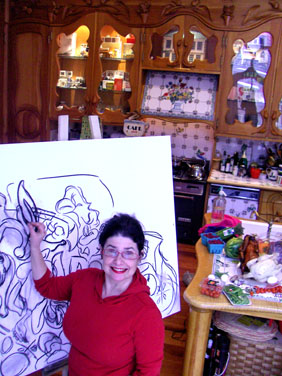
Vivian Reiss is an artist. She has been living and working in Toronto, Ontario, Canada, since 1975. She still spends time in New York City, New York, U.S. Reiss is a painter, creator of multimedia performance events and installations, designer of architectural projects, costumes, gardens and furniture; and currently working on a cook book. Reiss is the owner and creator of the Reiss Gallery, located at 500 College Street in Toronto.

Graffiti in Toronto, Ontario, Canada, is a cause of much disagreement among its residents. Graffiti is seen by some as an art form adding to the Toronto culture; however, others see graffiti as form of vandalism, viewing it as ugly, or as a form of property damage.
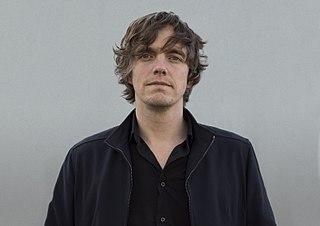
Michel de Broin is a Canadian sculptor. De Broin has created numerous public artworks in Canada and Europe, including the Salvador Allende monument in Montreal. He was the recipient of the 2007 Sobey Art Award.
David William Buchan was a Canadian artist who was part of the alternative art scene. He was also a graphic designer.
Joanne Tod (R.C.A.) is a Canadian contemporary artist and lecturer whose paintings are included in the permanent collections of the National Gallery of Canada, the Art Gallery of Ontario in Toronto and the Musée des beaux-arts de Montréal.
Catherine Marie Daley was a Canadian visual artist and educator located in Toronto, Ontario.
Dorothy Cameron Bloore (1924–2000) was a Canadian art dealer, and installation artist in Toronto, Ontario. Her works can be found in the Robert McLaughlin Gallery, Oshawa and the Art Gallery of Hamilton.
Wyn Geleynse is a pioneer film and video projection artist whose career spans a period of over 40 years.











